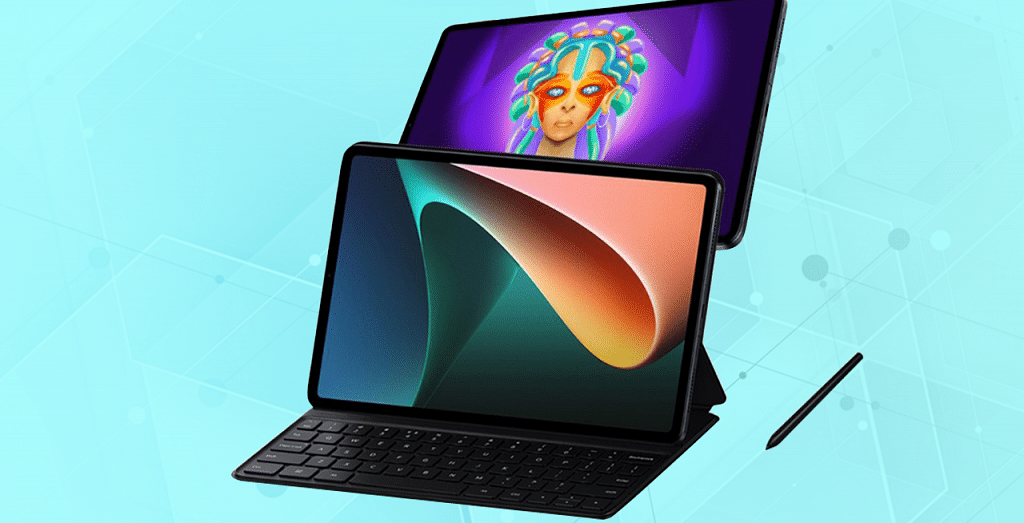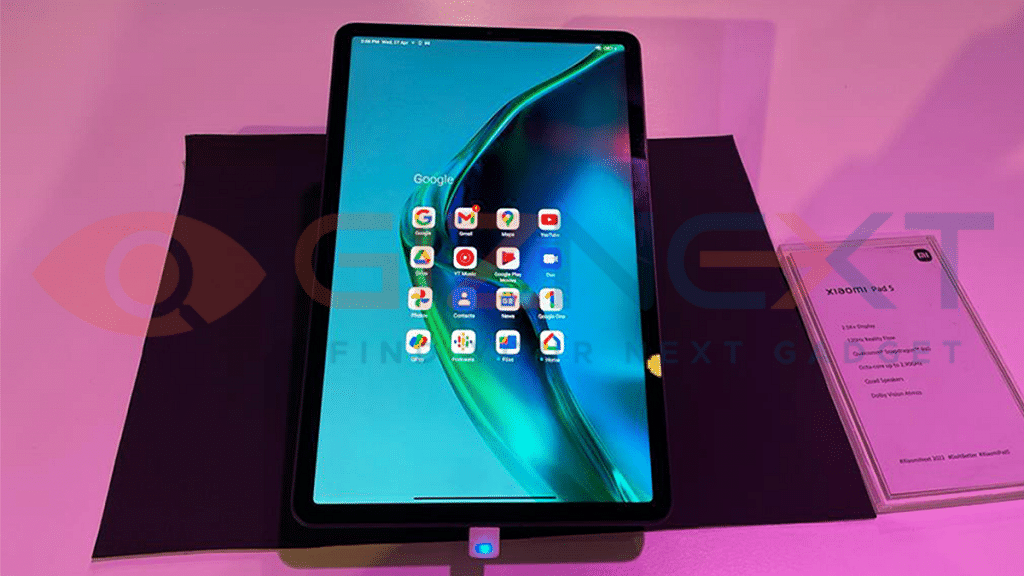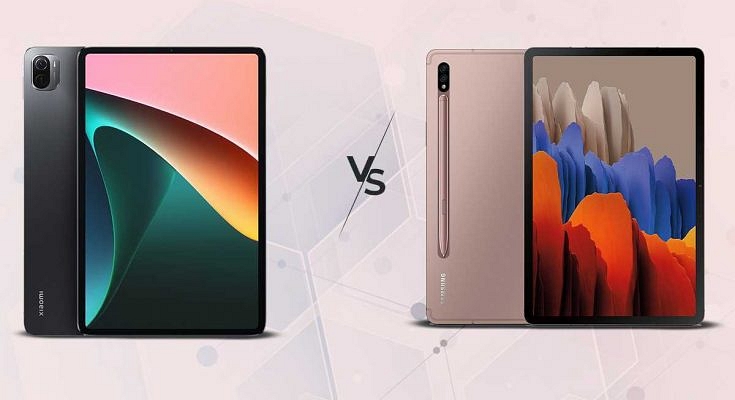Xiaomi has revamped its product portfolio in India with a slew of products. The Xiaomi Pad 5 also broke covers alongside the flagship Xiaomi 12 Pro series and the OLED Vision smart TV lineup. Xiaomi had introduced all new products for the premium audience in the Indian market. The Xiaomi Pad 5 has arrived as one of the most capable Android tablets under Rs. 30,000 in India. It is also Xiaomi’s first Android tablet for the Indian audience.
There have been a bunch of new launches in the tablet segment in the aforementioned price bracket. The OPPO Pad tablet is one of the latest strongest contenders for the Xiaomi Pad 5. We already have compared both these premium mid-tier Android tablets. This time we are pitting the Xiaomi Pad 5 against Samsung’s popular premium range tablet, i.e, the Galaxy Tab S7.
The Xiaomi Pad 5 brings potent hardware at lower rates compared to the Galaxy Tab S7? But can it easily beat the Samsung tablet based on spec-sheet and performance? We have tried to break it down for you in this comparison article:
Xiaomi Pad 5 Vs Galaxy Tab S7: Display Specification Comparison
The Xiaomi Pad 5 has been launched in India with a massive 11-inch display panel. Xiaomi has used a standard IPS LCD panel which has an aspect ratio of 16:10. The Xiaomi tablet’s display supports 1600 x 2560 pixel screen resolution and 1B colors. The large LCD panel further offers a 120Hz refresh rate and is HDR10+ certified.

The panel also features Dolby Vision for better visuals in every scenario. Xiaomi has used a good quality display on the Pad 5 tablet that will be suitable in every scenario. It fits best for high-resolution video consumption and also gaming.
The Samsung Galaxy Tab S7’s display size and specifications are almost identical to the Xiaomi Pad 5 tablet. The Galaxy Tab S7 also features an 11-inch display that is an LCD panel with 1600 x 2560 pixels screen resolution. The Samsung Galaxy tablet’s display also supports the same 120Hz refresh rate as the Xiaomi Pad 5’s panel and is also HDR10+ certified.
The display performance wouldn’t be much different on both Samsung Galaxy Tab A7 and the Xiaomi Pad 5. Besides the video playback experience, the Samsung tablet’s display will offer good gaming visuals as well.
Xiaomi Pad 5 Vs Galaxy Tab S7 Tablet: Which Has Better Camera Hardware?
The Xiaomi Pad 5 has basic camera hardware for imaging. At the back, the Xiaomi Pad 5 uses a single 13MP primary sensor with an f/2.0 aperture. The main camera has a bunch of shooting modes pre-installed in the camera app for an improved imaging experience. The Xiaomi Pad tablet supports 4K@30fps and 1080p@30fps video recording. It also is capable of capturing HDR images and Panorama shots.

The Samsung Galaxy Tab S7 isn’t far behind the Xiaomi Pad 5 in terms of imaging hardware. Samsung has also used a single 13MP camera for optics on the Galaxy Tab S7. The main camera comes with an f/2.0 aperture and has almost the same features and shooting modes as the Xiaomi tablet. This Samsung tablet is also capable of recording 4K@30fps video recording and offers HDR, Panorama, and other shooting modes.
While both Xiaomi Pad 5 and the Samsung Galaxy Tab A7 have identical rear camera hardware, it’s the selfie camera race where the Xiaomi tablet wins. Xiaomi has used an 8MP snapper with an f/2.0 aperture for selfies and video chats, while Samsung has used a smaller 5MP camera for selfies on its premium mid-range tablet.
Xiaomi Pad 5 Vs Samsung Galaxy Tab S7 Tablet: Chipset, Software Comparison
Under the hood, the Xiaomi Pad 5 tablet utilizes the Snapdragon 860 processor as its brain of operations. The premium Qualcomm chipset is built using a 7nm fabrication process and has octa-cores combined with Adreno 640 GPU. This high-range chipset will allow the Xiaomi Pad 5 Pro to take on all the tasks swiftly.
This tablet’s performance delivery will be good with general as well as extensive tasks. As for the configuration, the Xiaomi Pad 5 comes with a single 6GB RAM but a dual 128G/ 256GB storage configuration.
On the other hand, the Samsung Galaxy Tab A7 has a slightly upgraded chipset compared to the Xiaomi Pad 5. The Samsung tablet is driven by the octa-core Snapdragon 865 chipset. This is also an octa-core Qualcomm chipset that is used on premium range devices. The Galaxy Tab A7’s processor employs Adreno 650 GPU to render intensive graphics with ease.
This Samsung tablet is available with a higher RAM and storage configuration which adds some extra pointers here. You can buy the Galaxy Tab A7 with 6GB+ 128GB, 8GB+ 256GB, and 8GB+512GB RAM configuration.
If you wish to use the latest Android OS, then the Xiaomi Pad 5 is the one you need to consider. The Xiaomi Pad 5 tablet is launched with Android 11 OS and has MIUI 12.5 interface pre-installed. On the other hand, the Samsung Galaxy Tab S7 ships with older Android 10 OS out-of-the-box topped with a custom OneUI interface.
Xiaomi Pad 5 Vs Samsung Galaxy Tab S7: Battery And Fast Charging Comparison
The Xiaomi Pad 5 has been launched with a humongous 8,720 mAh battery. With this massive battery capacity, the Xiaomi tablet will deliver close to an entire day of backup on a single charge. The fast charging speed offered by the Xiaomi Pad 5 is 33W. The Samsung Galaxy Tab S7 is powered by a slightly smaller 8,000 mAh battery. The Samsung tablet makes up for the smaller battery by offering faster 45W charging speeds.
Xiaomi Mi Pad 5 Vs Samsung Galaxy Tab S7 Verdict: Which One Is The Best Deal?
If we compare the specifications, both Xiaomi Mi Pad 5 and the Samsung Galaxy Tab S7 are feature-rich in terms of hardware. The Samsung tablet has slightly better fast charging speeds and also higher configurations. But if you consider the pricing, the Xiaomi Pad 5 takes the lead here.
Do let us know your thoughts in the comments below. You can follow the GizNext Tech Enthusiast Telegram group and GizNext Tech Enthusiast WhatsApp group for fresh technology updates.
